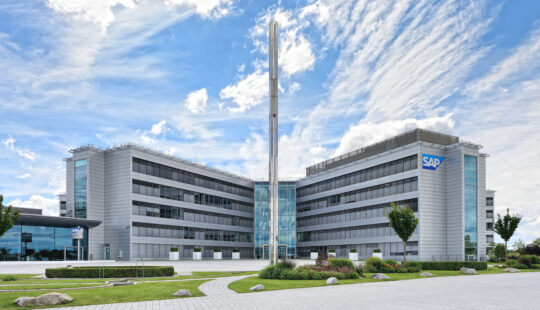A friend posted on Facebook this weekend: “Black men — how old were you the first time you had a gun pulled on you by a police officer?” He very quickly received hundreds of comments, and the post was shared a few hundred times.
What was striking about the flood of comments was that most of the men — and some women too — shared these experiences from when they were children or teens. Here are just a few:
- I was 17 and had been pulled over for suspicion of speeding on the way home from Wednesday night bible study. —Jeff Livingston, CEO, EdSolutions
- 14 – walking alone in my mother’s working-class black neighborhood at 10:00 a.m. on a drizzly Saturday morning. Never told her for fear she’d never let me walk anywhere but to the bus for school again. —Jim Shelton, Chief Investment and Impact Officer, Blue Meridian Partners
- 14-years-old on my way to school in Chicago. The officer was black. —Chris Rabb, State Representative, Pennsylvania General Assembly
- 15… First time cuffed and illegally searched too. My crime was giving a white coworker a ride home.
- 20, in my own house. The police broke in at 4:00 a.m. [in the] summer of 1986, two blocks from UPenn’s campus where I was a student. —Gordon Brown
- First year of teaching in Oakland. On my way home from school. I was wearing a suit and had a box full of papers to grade. They said I fit the description. —CJ Crowder, Managing Director, Alumni Leadership Development, Harvard University
Reading these posts has forced me to reflect on my own interactions with law enforcement.
I have been fortunate to have never had a gun drawn at me; however, I recall quite clearly a time in my senior year of college in Cambridge, MA. I was walking on a clear, brisk night in February alongside my roommates and two members of the Duke University basketball team. We were looking for a party to celebrate their win and our defeat in the basketball game earlier that evening. We attracted the notice of a Cambridge City police officer. He followed us slowly and creeped ever closer as we walked. So close that he entered our conversation uninvited. He said, “Everything is closed. Where do you folks think you are going?” The women in our group instinctively put ourselves between the men and the officer. We told him that we were heading back to our dorm and that we were students and would be on our way. We used our IDs to enter a building, where we called a cab and went to the hotel where the Duke team stayed.
I remember thinking to myself, “If we can just stay calm, we can talk our way out of this.”
What are we teaching our black youth about the opportunities that lie ahead when this happens? What have older black adults already learned? Every black person in America has likely had interactions like these and they make every black parent afraid that their children might not come home at night.
What does this mean for organizations like SAP, which have employees and customers in communities that have been directly impacted by the events of the past few weeks, and have goals to increase diversity in their workforce?
It means that when we ask our employees to bring their best selves to work, we must acknowledge that many of them are dealing with the fear, the grief, and the anger that this current environment brings. We must provide them with the resources that they need to address these emotions, but we must also address them organizationally. We need to lead with compassion and recognize that the social unrest we are witnessing in the U.S. is not just about one incident or one ethnic group, it’s about everybody and it impacts all of us globally.
We must come together to solve problems like this, and diversity and inclusion leaders need to work side by side with the leaders of their organizations to do so as a top priority.
I am so proud that our leaders at SAP have not been silent in the face of our employees’ pain and our society’s failures.
SAP North America President DJ Paoni sent a heartfelt message and will join me at a town hall for employees who want or need to come together to address these issues.
Our global leaders are speaking out as well. SAP Executive Board Member and Head of Customer Success Adaire Fox-Martin shared her experience as an Irish person of a certain generation who lived through “troubling times,” along with a quote from Nelson Mandela: “What counts in life is not the mere fact that we’ve lived. It is what difference we have made to the lives of others that will determine the significance of the life we lead.”
And SAP CEO Christian Klein noted, “This is a time for all of us to speak up and make our voice heard. We cannot allow hatred and racism in any form divide us along ethnic lines.”
In this moment, as a first step, leaders need to address the pain and grief with empathy and compassion. Longer term, we need to come together and accept the challenge that lies ahead to fix societal issues and create a world with equal opportunities for all. We need to act within our organizations and have a plan and a strategy to increase diversity within our ranks and ensure that people of color have access to development opportunities. Employees need to know that we don’t just talk, that we also take action to fix the very institutions that are in place to protect us.
We will continue this conversation by bringing in experts who can contextualize the experiences of people of color — starting with a three-part series, “Stress and Communities of Color in the time of Pandemic.”
We will also work alongside our leaders to identify how we can deploy SAP technology to help solve these complex problems.
Most importantly, we will maintain hope that if we can work together and focus on the strength that our diversity brings us, we will move forward. We will make progress.
Judith Williams is head of People Sustainability, senior vice president, and chief diversity and inclusion officer of SAP SE.



